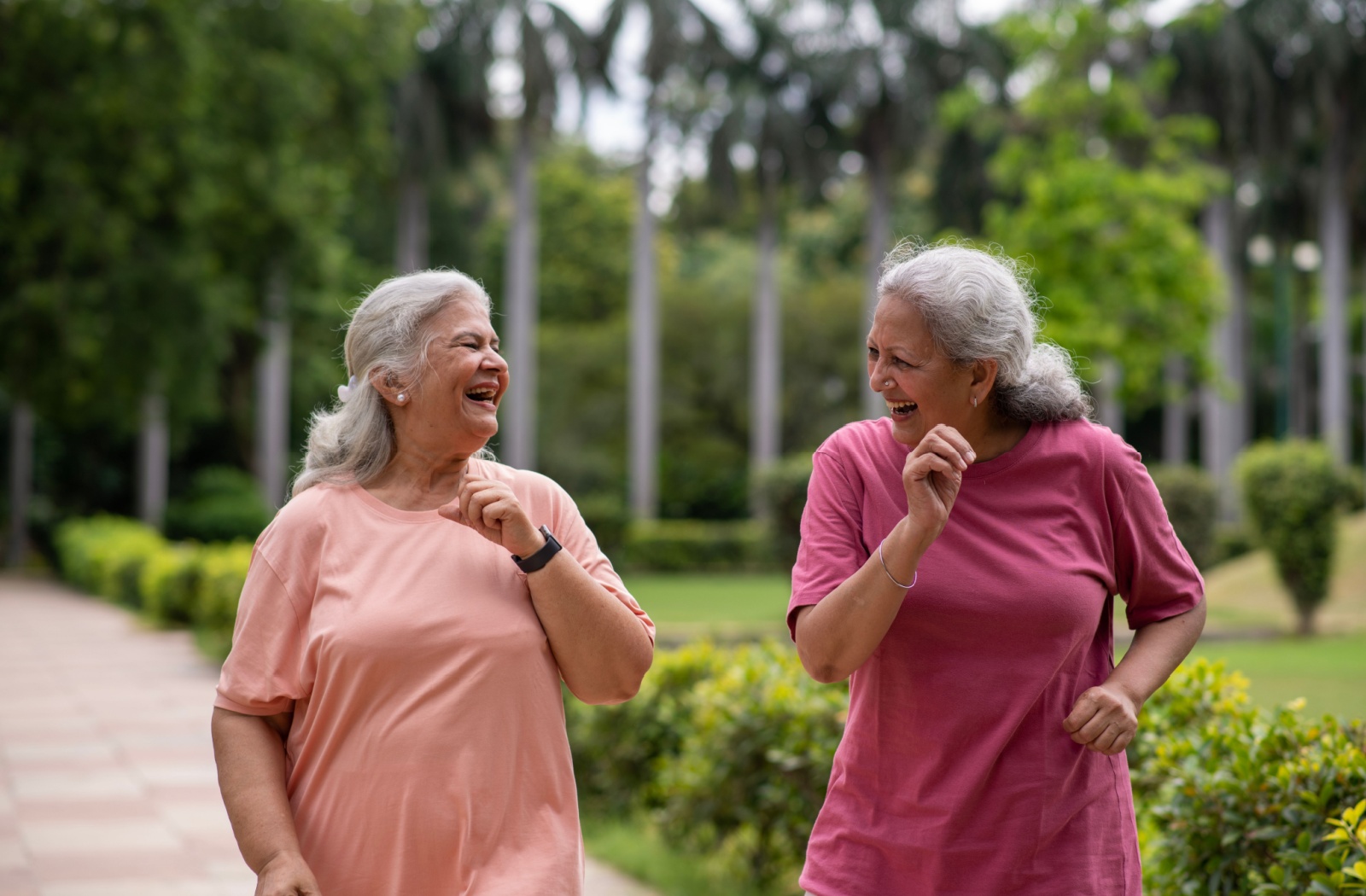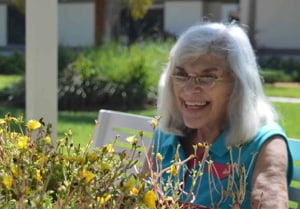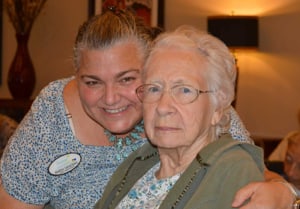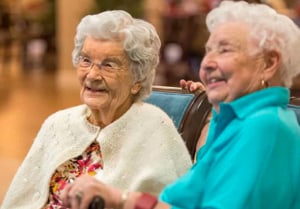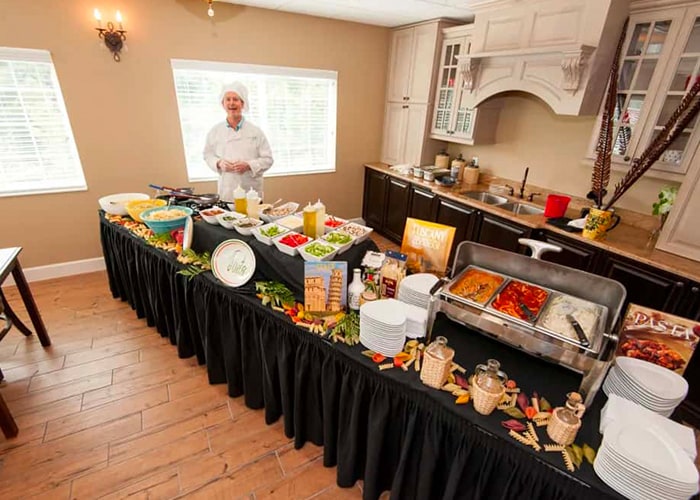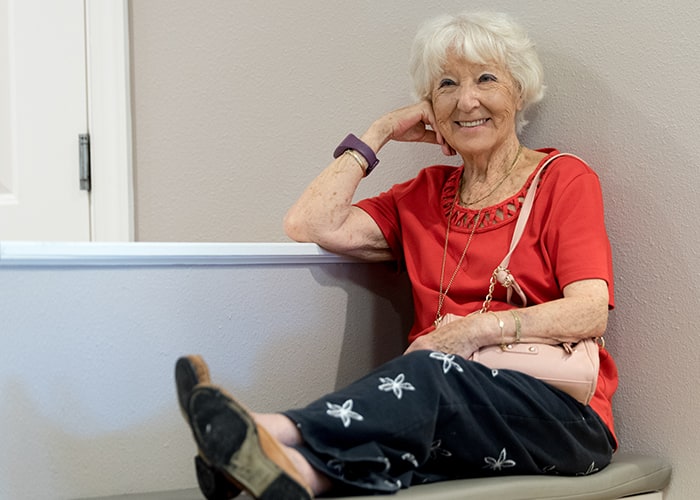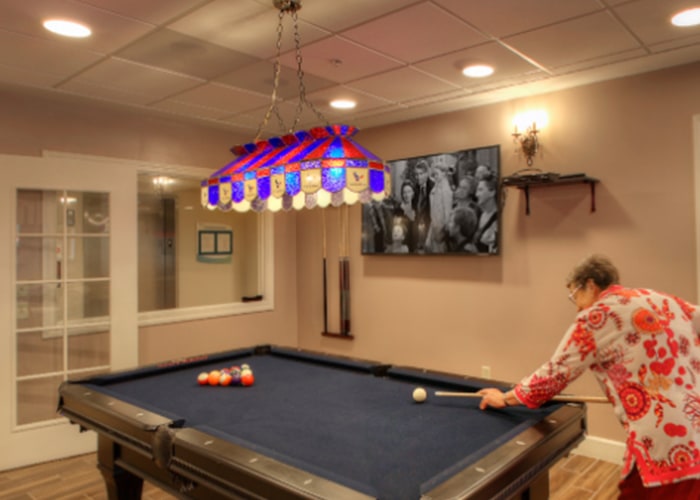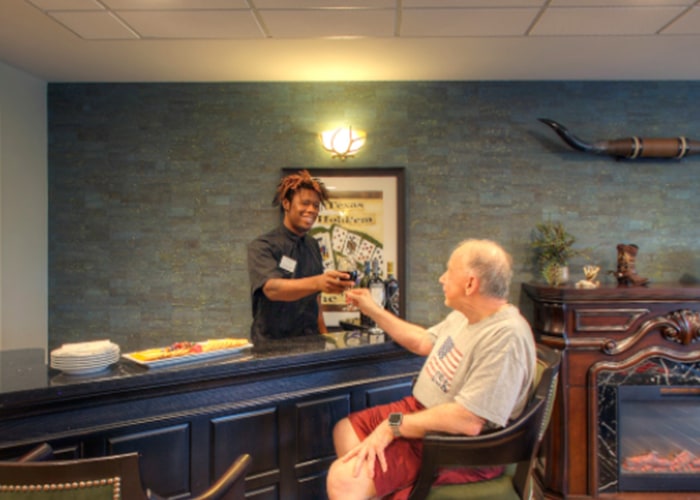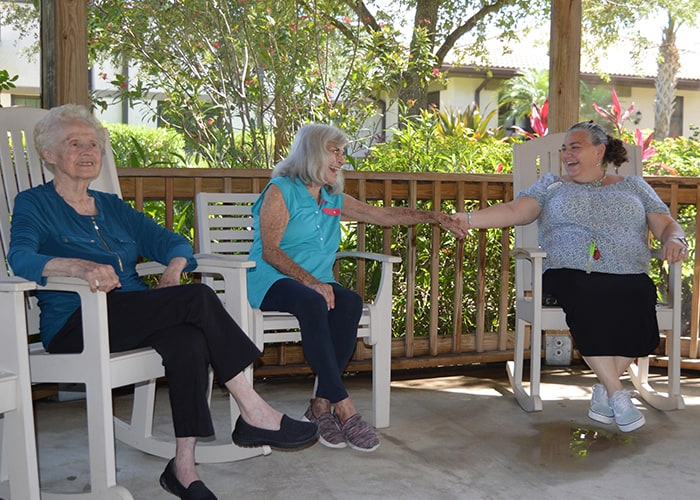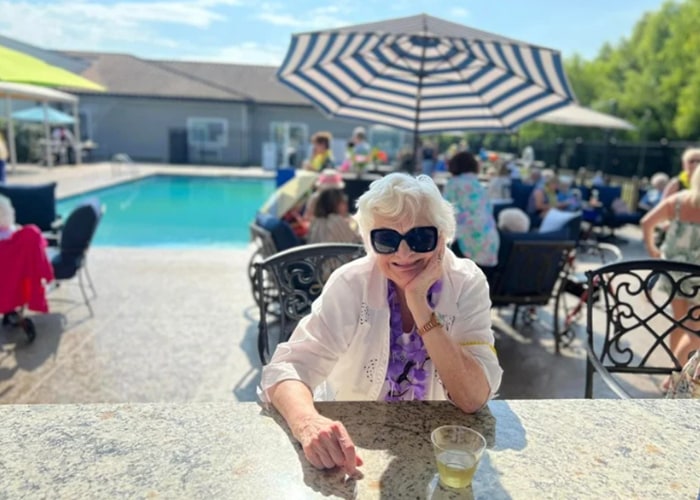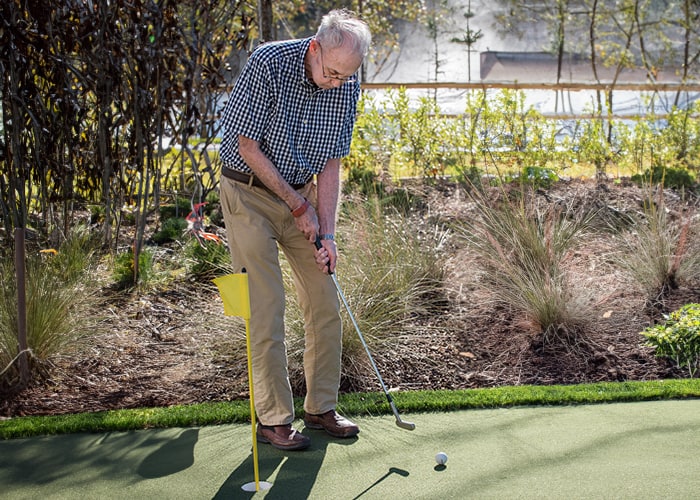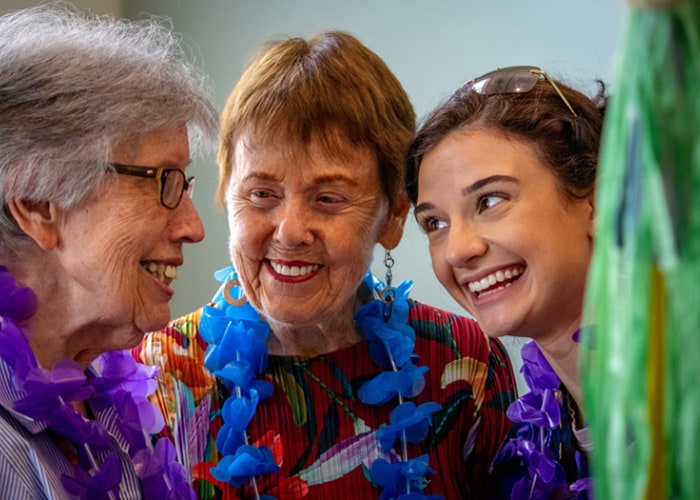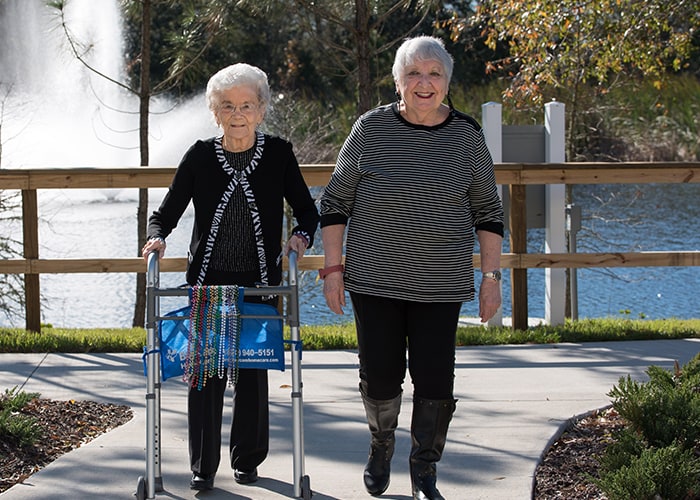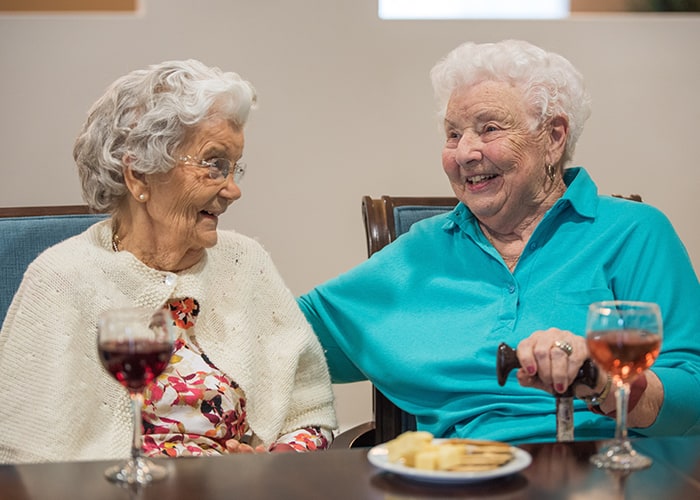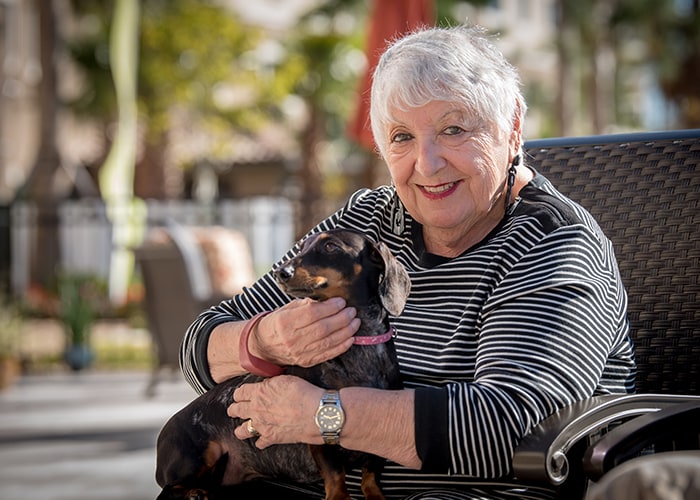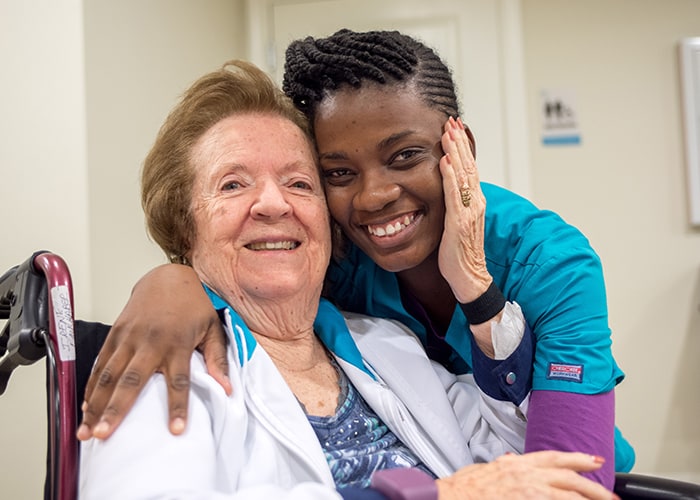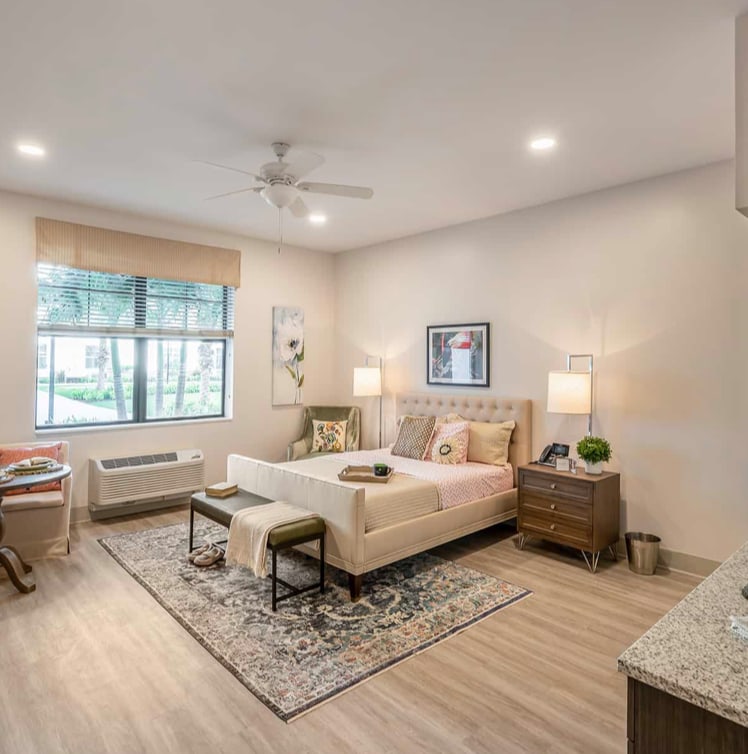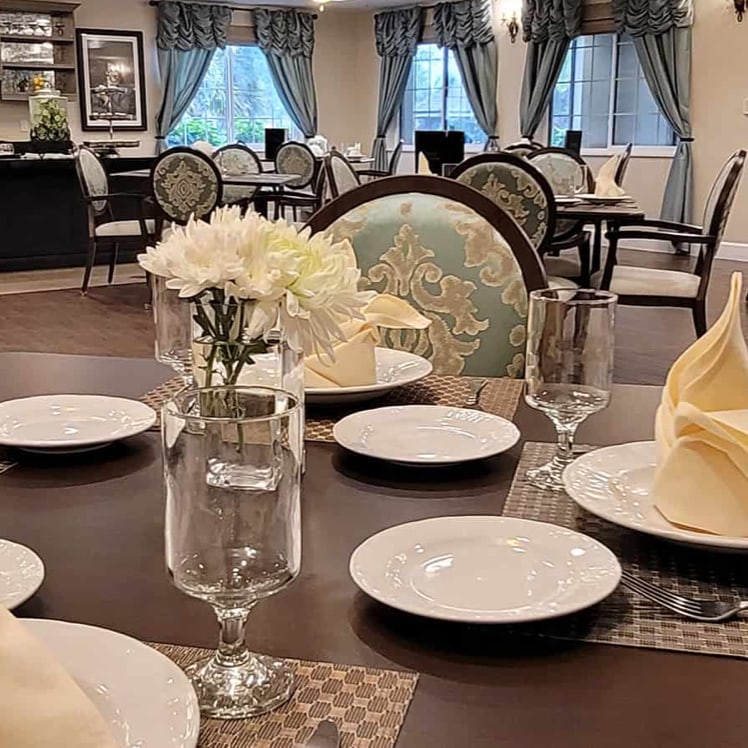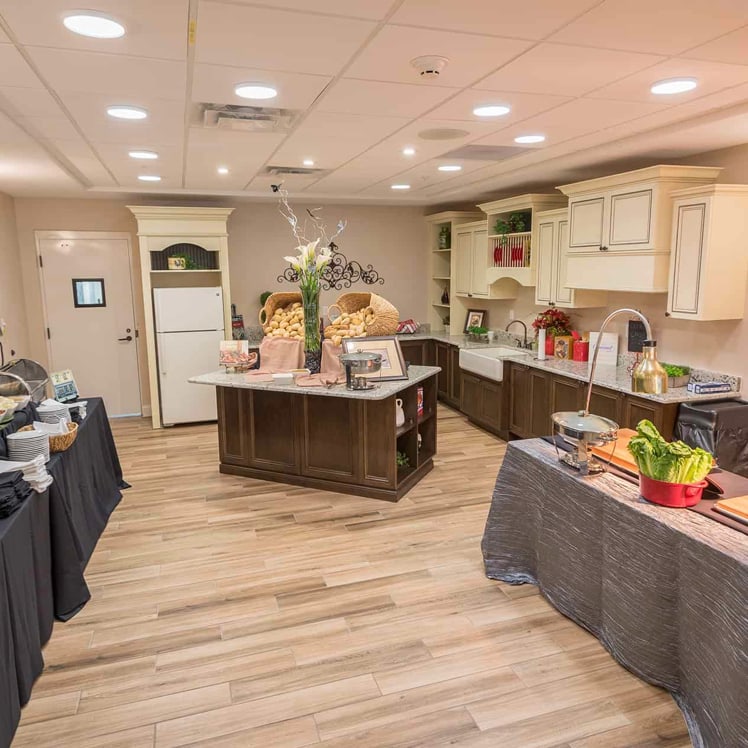Key Takeaways
- Exercise strengthens bones and reduces fracture risk for seniors with osteoporosis
- Weight-bearing, resistance, and balance exercises can provide the most benefits
- Start slowly with proper guidance and avoid high-impact or spine-stressing activities
- Senior living communities offer structured programs and professional support for safe exercise
Regular exercise designed for individuals with osteoporosis can help strengthen your bones, improve your balance, and support your independence.
Through assisted living programs or independent living communities, you can access safe, effective exercise routines that work with your body’s needs.
These 6 types of exercises are commonly recommended for people with osteoporosis:
- Weight-bearing exercises
- Resistance and strength training
- Balance and coordination activities
- Low-impact water exercises
- Flexibility and posture work
- Tai Chi for gentle movement
6 Types of Osteoporosis Exercise Recommended for Seniors
Finding safe and comfortable ways to move that suit your body is essential for managing and preventing osteoporosis. Talk to your healthcare provider and choose what works best for you.
While these 6 options offer numerous benefits, the most important thing is to stay active in any way you can.
Weight-Bearing Exercises
Weight-bearing exercises force your bones to work against gravity, which encourages bone growth.
Walking is one of the simplest and most effective options you have. You can start with short walks around your neighborhood or even inside your home.
Dancing combines weight-bearing movement with enjoyment and social connection. Light jogging or marching in place gives you the benefits without leaving your living space.
Stair climbing, when done with proper handrail support, provides excellent bone-strengthening benefits.
Resistance and Strength Training
Light weights or resistance bands help build both bone and muscle strength. You don’t need heavy equipment—even 1 or 2-pound weights can make a difference when used consistently.
Resistance bands are particularly useful because they’re portable and adjustable to your strength level.
Sit-to-stand exercises use your own body weight for resistance. Practice getting up from a chair without using your hands, then slowly lower yourself back down. Wall push-ups and supported squats can also give you strength training benefits while keeping you stable and safe.
Balance and Coordination Activities
Balance exercises directly address fall prevention, a primary concern associated with osteoporosis. Standing on one foot for 30 seconds challenges your balance system and strengthens the small muscles that keep you stable.
Heel-to-toe walking, like you’re walking on a tightrope, can improve your coordination. Sideways walking and backward walking help train your body to react appropriately in different movement situations. Practice these movements near a wall or sturdy surface for safety.
Low-Impact Water Exercises
Water provides natural resistance while supporting your body weight, making it a helpful choice for maintaining bone health. The buoyancy reduces stress on your joints while still providing the resistance your bones need to stay strong.
Water aerobics classes designed for seniors offer structured workouts with professional guidance. Swimming strokes and water walking give you cardiovascular benefits along with bone-strengthening resistance. The warm water also helps relax muscles and reduce stiffness.
Flexibility and Posture Work
Good posture protects your spine and reduces the risk of compression fractures. Gentle yoga poses can improve both flexibility and bone strength when chosen carefully. Focus on poses that extend your spine rather than round it forward.
Wall angels help strengthen the muscles that support good posture. Stand with your back against a wall and move your arms up and down like you’re making a snow angel.
Regular stretching routines keep your muscles flexible and supportive of your bones.
Tai Chi for Gentle Movement
Tai Chi combines slow, controlled movements with balance training and mental focus. The flowing movements help improve coordination while providing gentle resistance for your bones.
The mind-body connection in Tai Chi helps you become more aware of how your body moves through space. Group classes provide social interaction and motivation. The movements are low-impact but still provide the weight-bearing benefits your bones need.
What Exercises Should You Not Do with Osteoporosis?
High-impact activities, such as jumping or running on hard surfaces, can put too much stress on fragile bones.
Older adults with osteoporosis should avoid activities that involve quick, jarring movements or pose a high fall risk. Contact sports and activities with sudden direction changes aren’t recommended.
Forward-bending exercises can compress your spine and increase your fracture risk. Avoid toe touches, sit-ups with your hands behind your head, and deep forward bends in yoga. Activities that involve twisting your spine while bending forward are particularly risky.
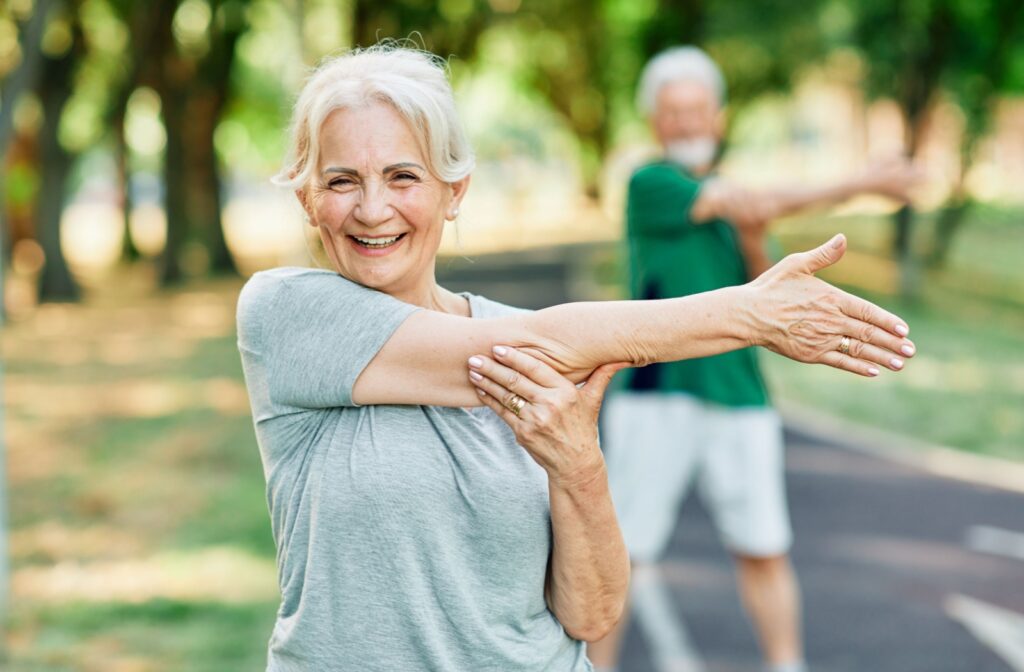
How Exercise Helps Fight and Prevent Osteoporosis
Your bones are living tissue that responds to the demands you place on them. When you exercise, you’re actually telling your bones they need to stay strong. The process stimulates the cells that build new bone tissue.
Exercise also strengthens the muscles around your bones, creating a natural support system.
Strong muscles act like a protective shield, absorbing some of the impact that would otherwise go directly to your bones. Muscle strength becomes particularly important in the areas around the spine and hips.
Balance and coordination improve with regular movement, which directly reduces your risk of falling. When you have better control over how you move, you’re less likely to find yourself in situations where a fall could cause a fracture.
Exercise Safety Guidelines for Seniors
Before starting any exercise program, talk with your healthcare provider about what’s safe for your specific situation. They can help you understand which activities match your bone density levels and overall health status.
Always warm up with gentle movements before exercising and cool down with stretching afterward. Listen to your body—some muscle fatigue is normal, but sharp pain or discomfort means you should stop. Start slowly and gradually increase duration and intensity as you get stronger.
Use proper equipment, such as supportive shoes and sturdy furniture nearby to support balance. Avoid exercising when you’re tired, dizzy, or not feeling well. Consider exercising with a friend or in a group setting for added motivation and safety.
Building Your Exercise Routine
Creating a weekly schedule helps make exercise a regular part of your life. Aim for a combination of weight-bearing, resistance, and balance exercises throughout the week.
You don’t need to do everything every day—variety keeps things interesting and works different aspects of bone and muscle health.
Track your progress by noting how you feel, how long you can exercise, or how many repetitions you can complete. Seeing improvement over time can motivate you to continue. As you get stronger, you can gradually increase the time or resistance in your routine.
Don’t forget to find activities you actually enjoy too—exercise doesn’t have to feel like punishment. Whether it’s dancing, gardening, playing with grandchildren, or group fitness classes, the activities you look forward to are the ones you’ll stick with long-term.
Mobility exercises can be particularly beneficial for maintaining independence.
Taking the Next Step Toward Stronger Bones
Having the right support system makes a significant difference in your success.
Whether that’s family members, friends, or professionals who understand osteoporosis, you don’t have to navigate this journey alone. The encouragement and guidance of others can help you stay motivated and safe.
At Inspired Living, we understand that maintaining bone health and independence go hand in hand. Our communities offer wellness programs designed to support your physical health while providing the social connections that make exercise enjoyable and rewarding.
Contact us today to schedule a tour and discover how our holistic wellness approach can help you thrive.

